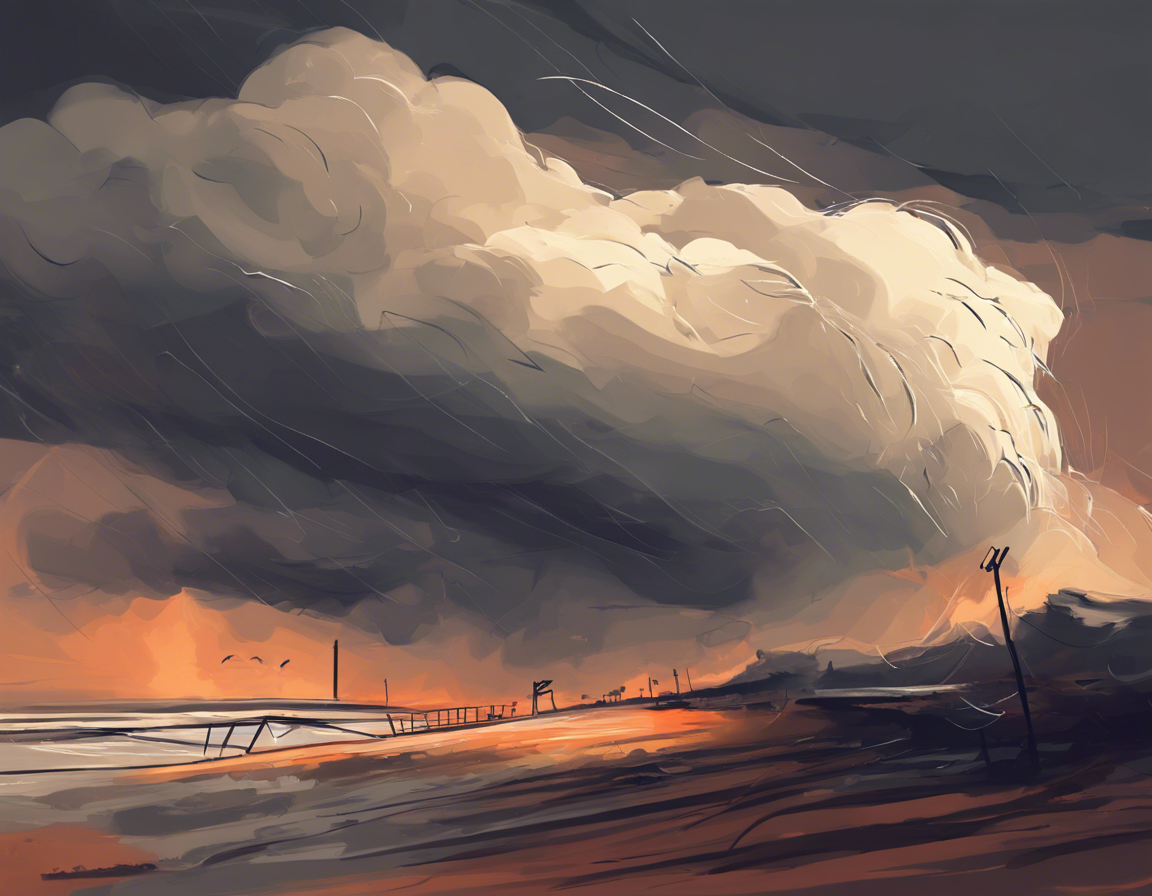Introduction
Storms are a natural phenomenon that can wreak havoc on our lives and communities. Understanding how to navigate through them is crucial for staying safe and prepared. Storm Nelson is one such weather event that can bring heavy rains, strong winds, and potential flooding. In this comprehensive guide, we will provide you with essential tips and strategies to help you navigate Storm Nelson effectively and minimize its impact on your life.
Understanding Storm Nelson
Storm Nelson is a tropical cyclone that forms in the Pacific Ocean near the Hawaiian Islands. It is known for its fast winds and torrential rains, which can cause significant damage to coastal areas and infrastructure. As the storm approaches land, it can intensify rapidly, posing a serious threat to those in its path.
Preparing for Storm Nelson
1. Stay Informed: Keep yourself updated with the latest weather forecasts and advisories issued by local authorities. Follow news outlets, meteorological agencies, and official social media channels for real-time updates on Storm Nelson’s trajectory and intensity.
2. Emergency Kit: Assemble an emergency kit that includes essential items such as non-perishable food, water, flashlights, batteries, a first aid kit, medications, and important documents. Make sure your kit is easily accessible and ready to grab in case of evacuation.
3. Secure Your Property: Trim trees and branches near your home, bring in outdoor furniture, and secure loose objects that could become projectiles in strong winds. Consider installing storm shutters or boarding up windows to protect your property from damage.
4. Evacuation Plan: Have a well-defined evacuation plan in place in case authorities issue a mandatory evacuation order. Know the designated evacuation routes, shelters, and transportation options available to you. Do not wait until the last minute to evacuate if instructed to do so.
During the Storm
1. Stay Indoors: Once Storm Nelson hits, stay indoors and away from windows, doors, and exterior walls. Seek shelter in a designated safe room or basement, if available. Avoid using candles and rely on flashlights for illumination to reduce the risk of fires.
2. Monitor Updates: Continuously monitor weather updates and emergency alerts during the storm. Be prepared to take immediate action if the situation worsens or if evacuation orders are issued. Stay connected with family members and neighbors to ensure everyone’s safety.
3. Power Outages: Be prepared for power outages that may last for an extended period. Use generators with caution and follow safety guidelines to prevent carbon monoxide poisoning. Unplug electronics to avoid damage from power surges when the electricity is restored.
After the Storm
1. Safety First: Exercise caution when venturing outside after the storm has passed. Watch out for downed power lines, flooded areas, and debris that could pose safety hazards. Avoid walking or driving through floodwaters, as they may be deeper or faster-moving than they appear.
2. Damage Assessment: Inspect your property for any damage caused by Storm Nelson. Document any losses or structural issues for insurance claims purposes. If you encounter significant damage or hazards, contact local authorities or emergency services for assistance.
3. Community Support: Check on your neighbors, especially the elderly, those with disabilities, or individuals who may need assistance. Offer help and support to those in need, and collaborate with community members to address recovery efforts and rebuild together.
Frequently Asked Questions (FAQs)
1. What is the difference between a tropical storm and a hurricane?
A tropical storm is characterized by maximum sustained wind speeds between 39-73 mph, while a hurricane has wind speeds of 74 mph or higher. Hurricanes are more intense and destructive than tropical storms.
2. How are tropical storms named?
Tropical storms are named alphabetically from predetermined lists by the World Meteorological Organization. Names are retired if a storm is particularly deadly or costly to avoid confusion in future years.
3. What should I do if I live in a coastal area prone to hurricanes?
If you live in a coastal area prone to hurricanes, familiarize yourself with evacuation routes, shelters, and emergency plans. Have a hurricane preparedness kit ready and stay informed about approaching storms to ensure your safety.
4. Can I ride out a hurricane in my home?
It is not recommended to ride out a hurricane in your home, especially if authorities issue evacuation orders. Hurricane-force winds, storm surges, and flooding can pose significant risks to your safety. It is best to evacuate to a designated shelter or safe location.
5. How can I help with hurricane relief efforts?
You can help with hurricane relief efforts by donating to reputable organizations providing aid to affected communities, volunteering your time and skills, or organizing fundraisers to support rebuilding efforts. Stay informed about specific needs and ways to contribute effectively.
Navigating through Storm Nelson or any severe weather event requires preparation, alertness, and community cooperation. By following the tips and guidelines outlined in this guide, you can enhance your safety and resilience in the face of inclement weather. Stay vigilant, stay prepared, and stay safe.
